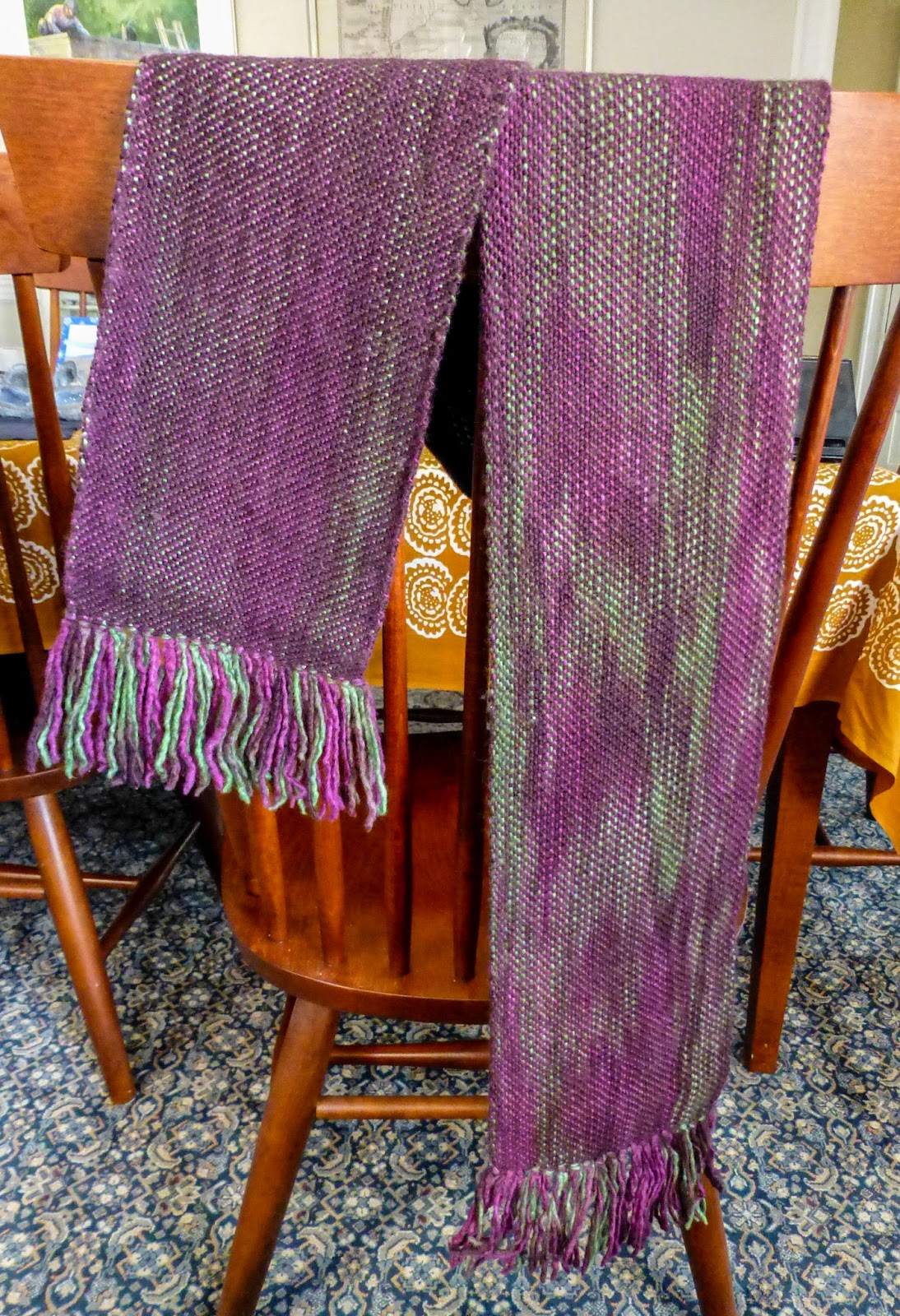After working about eight inches of the strap, I realized that I was running into severe trouble with the twisting and tangling of the warp threads.
I didn't run into this problem with my last tablet weaving project, because it was a symmetrical pattern. If your pattern has bilateral symmetry, you don't run into tangling and tension problems because you spin the cards one way for half the design, and then you spin the cards the opposite way for the other half, gradually un-doing all the twist you have put into the warp threads, and everything works out in the end.
But with an irregular double-faced pattern like the one I was using, the design is irregular. You twist cards this way and that to get the design you want, and you might never reverse some of them. The result is that the warp threads get progressively more and more tangled. And when some threads tangle one way, and other threads tangle another way, and others don't tangle at all, then they develop vastly different tensions, and you end up with some of your warp threads drooping way down while others are too taut.
All of this makes for a horrible-looking, raggedy and uneven weave, especially when it comes to your selvedges.
And my problems were exacerbated by the fact that I was using my rigid heddle loom to do my tablet weaving, when most normal people would just buy an inkle loom and that would probably be that.
After a great deal of Googling, I arrived at what turned out to be a great answer for me, which was suggested by a post on the Weaving Spirit blog. (Or actually it was suggested by a post on that blog plus some of the comments on that post.)
All of this makes for a horrible-looking, raggedy and uneven weave, especially when it comes to your selvedges.
And my problems were exacerbated by the fact that I was using my rigid heddle loom to do my tablet weaving, when most normal people would just buy an inkle loom and that would probably be that.
After a great deal of Googling, I arrived at what turned out to be a great answer for me, which was suggested by a post on the Weaving Spirit blog. (Or actually it was suggested by a post on that blog plus some of the comments on that post.)
Instead of tying my warp threads to the back bar of my loom and winding them up and expecting them to stay constant, I used home-made weights to weigh down the warp threads and keep them evenly taut.
 |
| The cannisters deployed, with yarn ends and fishing sinkers tucked inside |
I got 11 empty plastic film canisters and 55 one-ounce fishing weights or "sinkers." Then, two by two, I took a pair of cards, untangled their warps, wound most of the unused portion of the warp threads into a butterfly, and then stuffed the butterfly plus five sinkers into a canister and fastened the top.
This worked like a charm. It made the warp nice and taut evenly across the whole width of the strap. It was really easy to untangle the warp threads as they got tangled periodically, and just as easy to periodically let a little bit more yarn out of the cannisters when I needed to roll down my weaving. And my selvedges came out neater than ever.










































